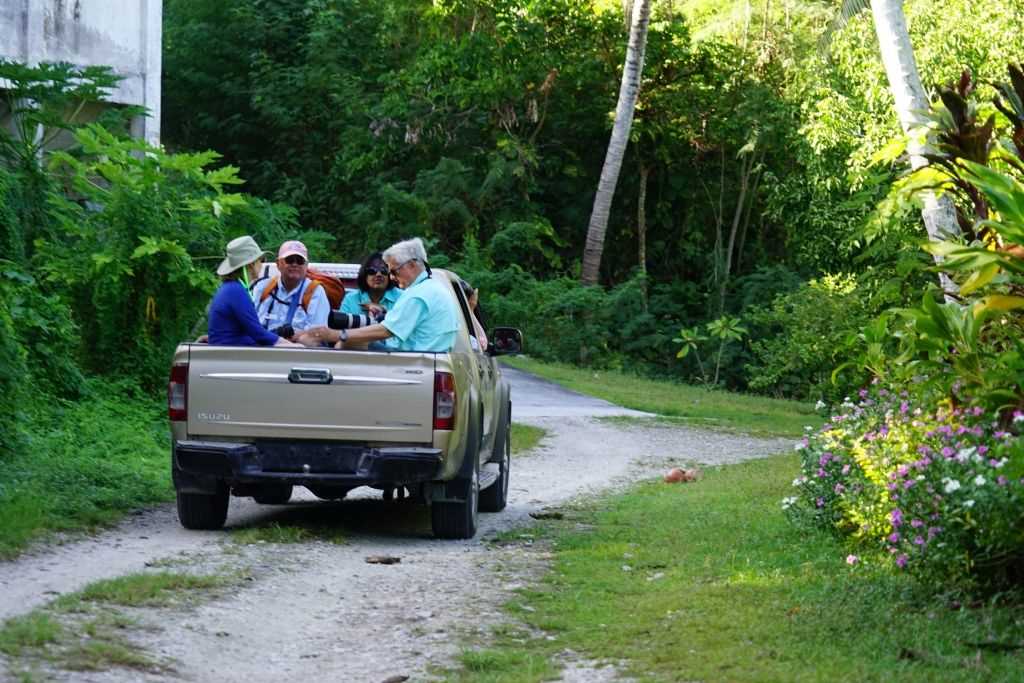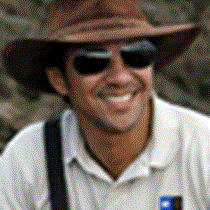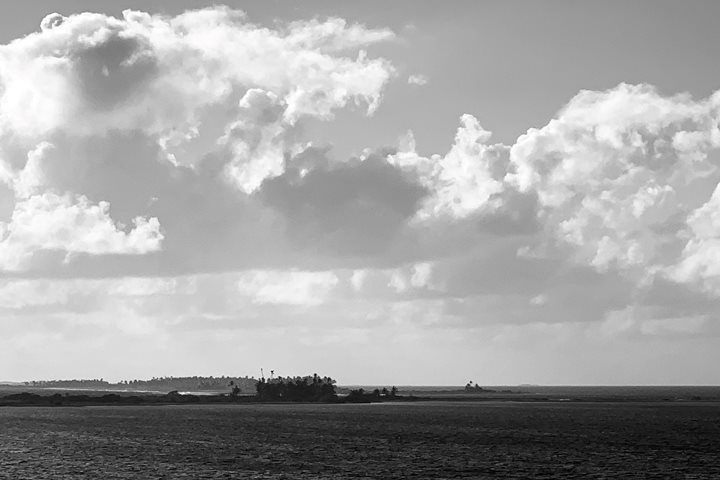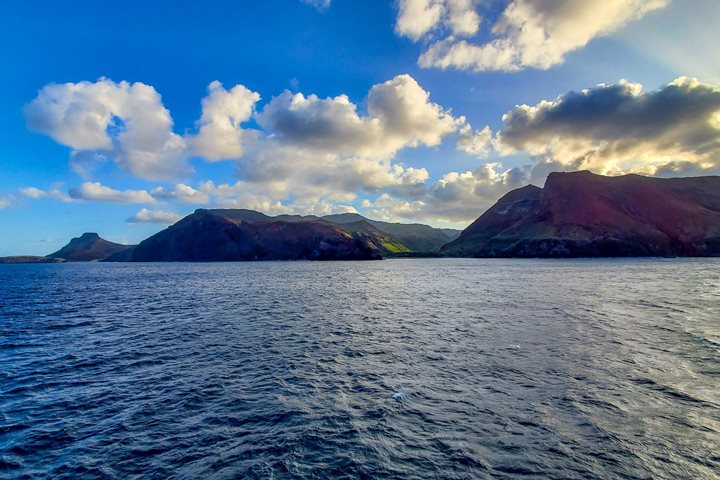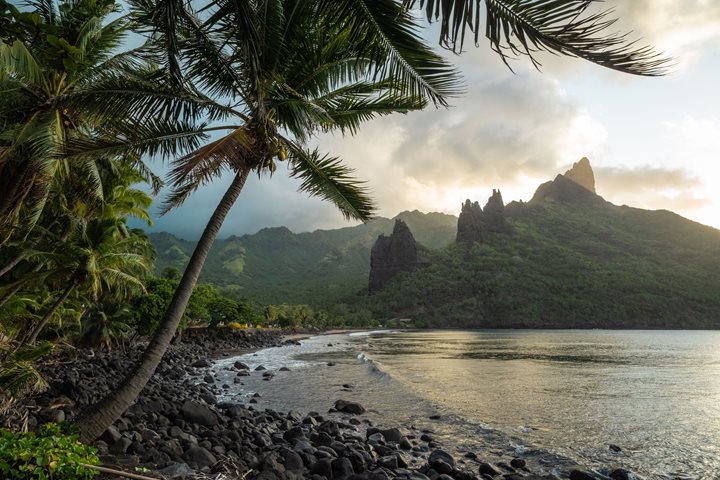Today we arrived to perhaps one of the most spectacular places during our trip. Though we might say that applies arguably to nearly every place we’ve so far visited, as they are all scenic, pristine, and each with a uniqueness all their own.
Still, Makatea will always stand out among others for its striking mix of geology, history, and wildlife.
Makatea is one of the few islands in French Polynesia that is considered a raised coral atoll. Its impressive hills made of a pure coral raise of 80 meters above sea level, which run all along the coast, covering the entire island length of about 7.5 kilometers. This feature by itself makes the island already a spectacular place to visit, but we were driven beyond this fact, crossing the entire island length onboard simple 4x4 pickup trucks to reach areas hidden in the forest, and to witness even more spectacular geological features.
The island has only two endemic bird populations, the Polynesian imperial pigeon and the Makatea fruit dove, which we were fortuned to observe—both!—during our bird-oriented walk. A place called “The Belvedere” was the perfect location to enjoy not only the spectacular vistas of the shores, but to observe the birds glide with the wind, crossing from one side to the other repeatedly.
The only road that crosses the island took us through the ghostly looking town of Vaitepaua. This was a hub for activity in times when hundreds of islanders labored under the employment of the Pacific Phosphate Company, which removed great amounts of phosphate from the land between the years of 1917 and 1965. Some 60 years after aggressive extraction, the forest has since reclaimed the island, though only few areas are deemed habitable for its remaining 80 inhabitants.
Once all activities offered for the morning were completed, our guests arrived at the area known as the grottos. Giant underground caverns connected by several semi-submerged passages were our playground for the late morning, and armed with masks and snorkels, we investigated the pre-illuminated chambers one by one.
As for our afternoon, a new site for drift snorkel was investigated; our guests had a refreshing afternoon among coral heads, colorful and intricate fish, and spectacular underwater geology!

